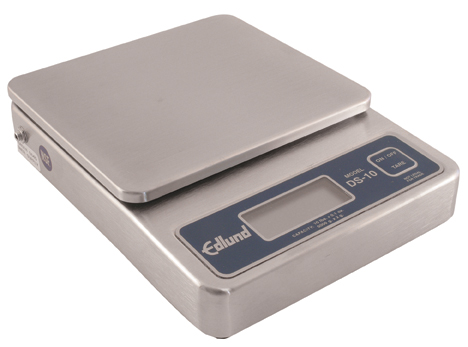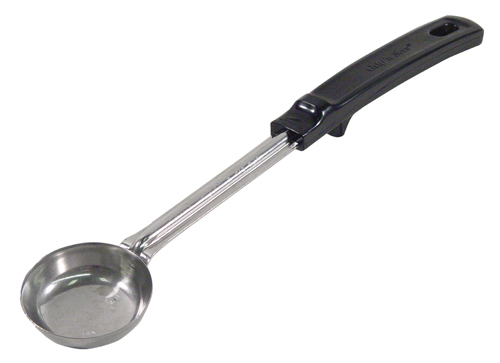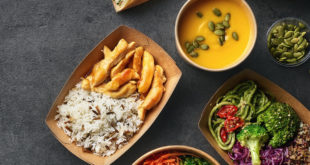 Imagine for a second that you run Coca-Cola instead of your restaurant. You sell millions of cans of soda every day, and you’re making a decent profit. Now imagine that as the founder and owner of Coke, you never bothered to standardize the size of each can, so some cans are 12 ounces, others are 13, and some are even as large as 16 ounces, but you charge the same price for all of them.
Imagine for a second that you run Coca-Cola instead of your restaurant. You sell millions of cans of soda every day, and you’re making a decent profit. Now imagine that as the founder and owner of Coke, you never bothered to standardize the size of each can, so some cans are 12 ounces, others are 13, and some are even as large as 16 ounces, but you charge the same price for all of them.
Think you’d be losing a little money every time you sold a 16 ounce can of Coke?
There are more similarities between your restaurant and Coca-Cola than you might think. You both serve a consumable product. You both charge a flat rate for a portion of that product although you make a lot more of that product than you serve each customer.
But unlike a lot of restaurants, I guarantee you Coca-Cola pours the same exact amount of Coke product into every single can. Their price is then figured based upon making a certain amount of profit margin assuming that exact amount is in every single can. As you can imagine, if their machines were off by a fraction of an ounce, they could lose millions of dollars.
Controlling the portion sizes you serve your customers is an easily overlooked but extremely important way to cut costs and preserve your restaurant’s margin. In the high-pressure atmosphere of a commercial kitchen during the dinner rush, you need simple but highly effective methods for keeping portions exactly the same.
The first place to address portions is with proteins. A good portion scale can weigh out protein portions quickly and simply, giving you an extra measure of control over what is probably the most expensive item on any entrée plate. Check out this blog post for more info on scales.
Secondly, your starches, veggies, soups, etc. need to be portioned out as exactly as possible. Even a half ounce over the serving size called for in each entrée can translate into thousands of dollars in lost revenue over the course of year. The easiest way to control these portion sizes is with kitchen utensils that measure portions accurately. Vollrath’s line of ladles, dishers, and Spoodles are all designed to allow the quick and effective measurement of portion sizes.
Portion control is important because it is the basis for calculating your restaurant’s profitability. Especially in an era of deep discounting and razor thin margins, being able to control portions is an incredibly important element when you decide how to price your menu. That’s because you’re making assumptions about how much each entrée served will cost you. Those assumptions go out the window if the actual quantity served is incorrect.
Effective portion control allows you to dial up an aggressive price at a decent margin that beats the competition but keeps you profitable. Any restaurant manager knows what a tightrope those margins can be. Without portion controls, you’re far more likely to fall off than to make it to the other side.
 Corner Booth Blog | TundraFMP Restaurant Supply, News & Equipment Blog
Corner Booth Blog | TundraFMP Restaurant Supply, News & Equipment Blog




Real good point about the soda! What I would always catch is the staff filling up the glass of soda and letting the soda over flow the glass. I would ask the person, if at home would they keep on filling the glass till it spilled on the counter? The answer would always be NO, so why do it here! The same goes for over pouring on draft beer.
It’s amazing how wasteful people get when they don’t have ownership… Getting employees to think like you, the owner, is one of the toughest battles to wage in the food waste war. Succeeding brings many rewards however.
We recently bought a pizzeria. Silly us, we have no restaurant experience, but thought it would be nice to have something to retire with, my husband being 62, and myself 58. Boy, were we wrong. We held out own the first month (we took over May 1), but now we find ourselves having to put our own money in. We know we need more portion control, but we aren’t sure just how to do it. Any help would be greatly appreciated.
Hi Christy,
I’m sorry to hear you’re having troubles. As an industry veteran myself, I know the challenges you’re facing.
Portion control will surely help level the food cost, and you should definitely start to track that through inventory management. Compare period ending cycle counts to what was ordered (expense) in that period. Then you can get a sense for how much is left over versus how much was sold.
Depending on your business, you can look into pizza scales to track the exact weight of pizza dough plus their ingredients (think pre-portioned cheese, toppings, etc.). You can also use a small scale to portion out some ingredients versus a larger one for the whole pie. You may find pre-portioning out 4 oz dough balls (stored in dough boxes) and rolling them out by hand is an easy way to track what’s going out the door. Finally, use a scoop for your sauce and stick to it, regardless of how “thin’ it might look. Do some testing and see if it affects the flavor of your pizza.
Keep in mind that as you begin to portion out ingredients, labor costs may increase as it takes more time to get a pizza out the door.
Finally one last tip could be adding some high margin items to your menu that are easy to make, but better for your bottom line.
I hope that helps, and best of luck to you!
– Chris @ Tundra Restaurant Supply